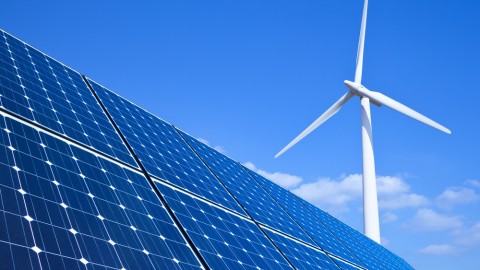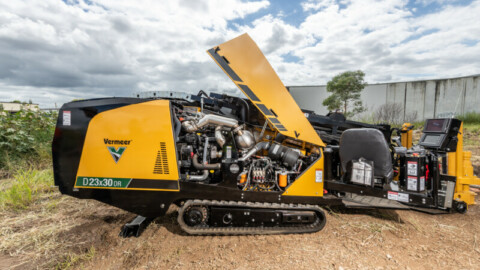Bobbing off the coast of Tasmania’s King Island is Wave Swell, an artificial blowhole and turbine that harnesses tidal forces to sustainably power 200 homes for a year. Australia will need more smart solutions like this award-winning home-grown engineering innovation as it races to provide energy for its population – currently sitting at 26 million and growing.
Smart solutions need smart people, and the Federal Government has committed to permanently increasing its skilled migrant intake to 195,000 a year, which could mean that with the new migration targets, the country’s population could grow to 40 million by 2050.

The population of the world, scaled. Image: Sense
Supporting this significant increase will require careful management of key resources – from food and energy to environment and water. One of the most pressing challenges is managing energy – the country’s energy use has risen from 4,000PJ a year to 6,200PJ, thereby increasing Australia’s greenhouse gas emissions by around 50 per cent.
Australia is making progress with the transition to green energy and electrified transportation, albeit slowly, and much more can be done to accelerate the transition, especially since the technology to manage the nation’s energy consumption is readily available.
Australians’ high carbon footprint
At 17 tonnes per capita per year, Australians already have one of the highest carbon footprints, although there is an overwhelming desire to address this. A recent Finder.com report showed that more than 65 per cent of Australians are concerned about their personal carbon footprint.
A major contributor to Australians’ carbon footprint is home energy use; this can and should be better monitored and managed. One of the technologies currently available in Australia to accomplish this is Sense, an advanced AI technology that runs on next-generation smart meters.
Sense Managing Director International, Michael Jary, said, “Sense machine learning algorithms analyse high resolution electricity data and identify patterns in the electrical signal, enabling a breakdown of domestic electricity consumption to the appliance level in real time.”
Sense was founded by pioneers in speech recognition, and they have evolved the technology to be able to “listen to” and analyse the electrical signatures of home appliances.
By sampling current at high resolution, Sense-enabled meters offer homeowners a real time and reflective view of their consumption by appliance while also alerting them to possible breakdowns.
“One needs to measure consumption to manage it, and for the growing number of sustainability-aware Australian consumers, these intelligent meters are an invaluable tool,” Mr Jary said.
Efficient management of power is key
To support Australia’s rapidly growing population and meet its energy needs, ramping up supply must go together with efficient management of available power.
Sense can play a pivotal role in this by offering utility providers more accurate and real time demand forecasts. This, in turn, enables power infrastructure investments to be maximised and aggregates power generation and demand that can be used by the wholesale market.
Mr Jary said behavioural demand side response becomes much more effective with real-time device detection.
“Consumers receive nudges to turn down specific high-consuming appliances. That makes it easy to act, maximising both load and participation.
“At scale, load under control becomes reliable and predictable, negating the need for direct control. Consumption, voltage, and frequency can be managed cost effectively via domestic meters.
“Homes can shift 4.5 times more load during demand peaks or when the time of use (TOU) tariff changes,” Mr Jary said.
Ensuring power supply reliability is critical and as Australia enters its third La Nina season, the extremely wet conditions may result in overgrown trees and falling branches, both of which have the potential to interfere with power lines and interrupt supply.

A Sense-embedded meter. Image: Sense
With fault detection insight from several Sense-enabled meters in a given region, energy providers can quickly geolocate the source of a faulty power line – mitigating the time wasted from repair crews driving around for extended periods searching for damaged power lines – and assist in quickly getting help to the specific fault location. With the severe skills shortage Australia is experiencing, it is vital to make optimum use of available talent.
Data from Sense-enabled meters can also be used to monitor transformer malfunctions and other grid assets by comparing those meters experiencing the same anomaly against a network map. This will enable utilities to be proactive and move to a more efficient, condition-based approach to maintenance.
According to the Ipsos Climate Change Report 2022, 83 per cent of Australians across the country are concerned about climate change, an increase in concern from 56 per cent in 2011 which is partly influenced by more frequent and extreme natural disaster events in recent years.
The tools for reducing Australia’s carbon footprint are available now and it is time to put them into the hands of homeowners and grid managers. The decisions taken today will shape tomorrow’s Australia.
This sponsored editorial is brought to you by Sense. For further information on Sense products and to make sense of your energy needs, please visit https://sense.com.














